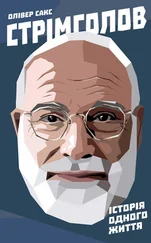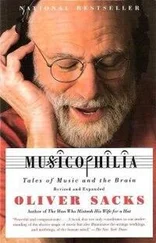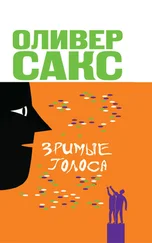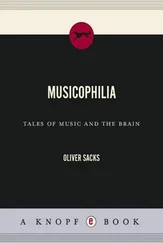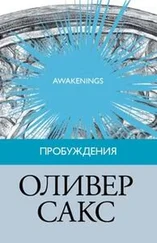Directing his spectroscope to the sun, Kirchhoff realized that one of the countless dark Fraunhofer lines in the solar spectrum was in exactly the same position as the bright yellow line of sodium – and that the sun, therefore, must contain sodium. The general feeling, in the first half of the nineteenth century, had been that we would never know anything about the stars beyond what could be gained by simple observation – that their composition and chemistry, in particular, would remain perpetually unknown, and so Kirchhoff’s discovery was greeted with astonishment. [51]
Kirchhoff and others (and especially Lockyer himself) went on to identify a score of other terrestrial elements in the sun, and now the Fraunhofer mystery – the hundreds of black lines in the solar spectrum – could be understood as the absorption spectra of these elements in the outermost layers of the sun, as they were transilluminated from within. On the other hand, a solar eclipse, it was predicted, with the central brilliance of the sun obscured and only its brilliant corona visible, would produce instead dazzling emission spectra corresponding to the dark lines.
Now, with Uncle Abe’s help – he had a small observatory on the roof of his house, and kept one of his telescopes hitched up to a spectroscope – I saw this for myself. The whole visible universe – planets, stars, distant galaxies – presented itself for spectroscopic analysis, and I got a vertiginous, almost ecstatic satisfaction from seeing familiar terrestrial elements out in space, seeing what I had known only intellectually before, that the elements were not just terrestrial but cosmic, were indeed the building blocks of the universe.
At this point, Bunsen and Kirchhoff turned their attention away from the heavens, to see if they could find any new or undiscovered elements on the earth using their new technique. Bunsen had already observed the great power of the spectroscope to resolve complex mixtures – to provide, in effect, an optical analysis of chemical compounds. If lithium, for example, was present in small amounts along with sodium, there was no way, with conventional chemical analysis, to detect it. Nor were flame colors of help here, because the brilliant yellow flame of sodium tended to flood out other flame colors. But with a spectroscope, the characteristic spectrum of lithium could be seen immediately, even if it was mixed with ten thousand times its weight of sodium.
This enabled Bunsen to show that certain mineral waters rich in sodium and potassium also contained lithium (this had been completely unsuspected, the only sources hitherto having been certain rare minerals). Could they contain other alkali metals too? When Bunsen concentrated his mineral water, rendering down 600 quintals (about 44 tons) to a few liters, he saw, amid the lines of many other elements, two remarkable blue lines, close together, which had never been seen before. This, he felt, must be the signature of a new element. ‘I shall name it cesium because of its beautiful blue spectral line’, he wrote, announcing its discovery in November 1860.
Three months later, Bunsen and Kirchhoff discovered another new alkali metal; they called this rubidium, from ‘the magnificent dark red color of its rays.’
Within a few decades of Bunsen and Kirchhoff’s discoveries twenty more elements were discovered with the aid of spectroscopy – indium and thallium (which were also named for their brilliantly colored spectral lines), gallium, scandium, and germanium (the three elements Mendeleev had predicted), all the remaining rare-earth elements, and, in the 1890 s, the inert gases.
But perhaps the most romantic story of all, certainly the one that most appealed to me as a boy, had to do with the discovery of helium. It was Lockyer himself who, during a solar eclipse in 1868, was able to see a brilliant yellow line in the sun’s corona, a line near the yellow sodium lines, but clearly distinct from them. He surmised that this new line must belong to an element unknown on earth, and named it helium (he gave it the metallic suffix of -ium because he assumed it was a metal). This finding aroused great wonder and excitement, and it was even speculated by some that every star might have its own special elements. It was only twenty-five years later that certain terrestrial (uranium) minerals were found to contain a strange, light gas, readily released, and when this was submitted to spectroscopy it proved to be the selfsame helium.
The wonder of spectral analysis, analysis at a distance, had literary resonances as well. I had read Our Mutual Friend (written in 1864, just four years after Bunsen and Kirchhoff had launched spectroscopy), and here Dickens imagined a ‘moral spectroscopy’ whereby the inhabitants of remote galaxies and stars might analyze the light from the Earth to gauge its good and evil, the moral spectrum of its inhabitants.
‘I have little doubt’, Lockyer wrote at the end of his book, ‘that, as time rolls on… the spectroscope [will] become… the pocket companion of everyone amongst us.’ A small spectroscope became my own constant companion, my instant analyzer of the world, whipped out on all sorts of occasions: to look at the new fluorescent lights that were beginning to appear in London Tube stations, to look at solutions and flames in my lab, or at coal fires and gas flames in the house.
I also explored the absorption spectra of compounds of all sorts, from simple inorganic solutions to blood, leaves, urine, and wine. I was fascinated to find out how characteristic the spectrum of blood was even when dried and how small a quantity was needed to analyze in this fashion – one could identify a faint bloodstain more than fifty years old and distinguish it from a rust stain. The forensic possibilities of this intrigued me; I wondered if Sherlock Holmes, along with his chemical explorations, had used a spectroscope too. (I was especially fond of the Sherlock Holmes stories, and even more of the Professor Challenger ones which Conan Doyle had written later – I identified with Challenger; I could not identify with Holmes. In The Poison Belt , spectroscopy plays a crucial role, for it is a change in the Fraunhofer lines of the sun’s spectrum that alerts Challenger to the presence of an approaching poison cloud.)
But it was the bright lines, the brilliant colors, the emission spectra I always came back to. I remember going to Piccadilly Circus and Leicester Square with my pocket spectroscope, and looking at the new sodium lights that were being used for street lighting, at the scarlet neon advertisements, and at the other gas-discharge tubes – yellow, blue, green, according to the gas used – which now turned the West End into a glory of colored lights after the long blackout of the war. Each gas, each substance, had its own unique spectrum, its own signature.
Bunsen and Kirchhoff had felt that the position of the spectral lines was not only a unique signature of each element, but a manifestation of its ultimate nature. They seemed to be ‘a property of a similar unchangeable and fundamental nature as the atomic weight’, indeed a manifestation – as yet hieroglyphic and indecipherable – of their very constitution.
The complexity of spectra (that of iron, for example, contained several hundred lines) in itself suggested that atoms could hardly be the small, dense masses which Dalton had imagined, distinguished by their atomic weights and little else.
One chemist, W.K. Clifford, writing in 1870, expressed this complexity in terms of a musical metaphor:
… a grand piano must be a very simple mechanism compared with an atom of iron. For in the spectrum of iron there is an almost innumerable wealth of separate bright lines, each one of which corresponds to a sharp definite period of vibration of the iron atom. Instead of the hundred-odd sound vibrations which a grand piano can emit, the single iron atom appears to emit thousands of definite light vibrations.
Читать дальше

